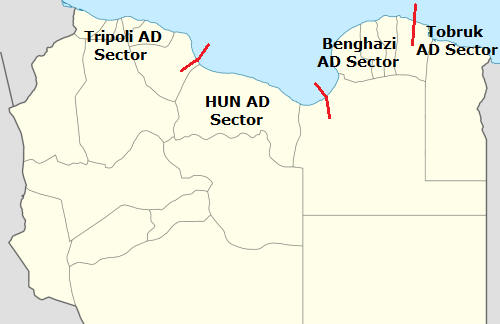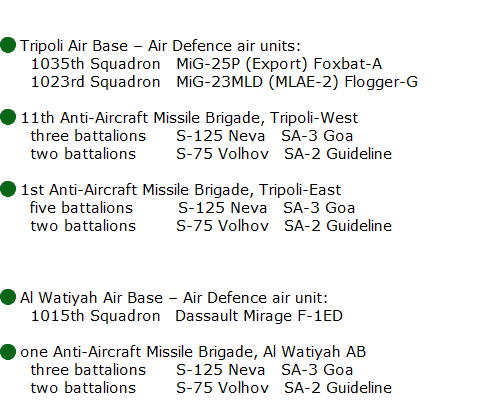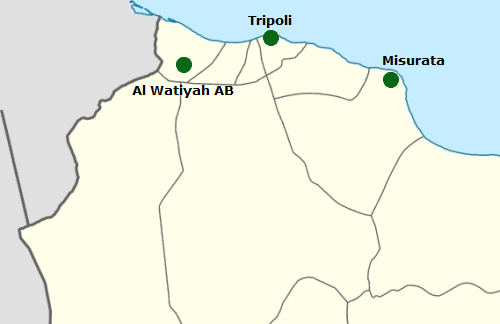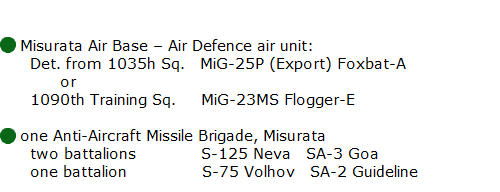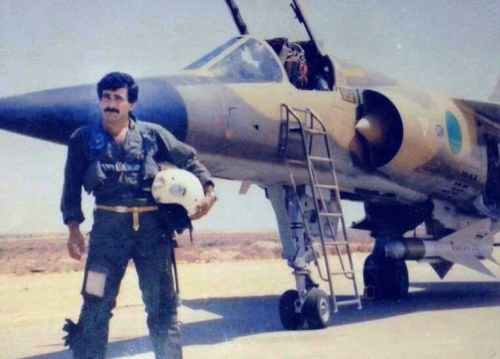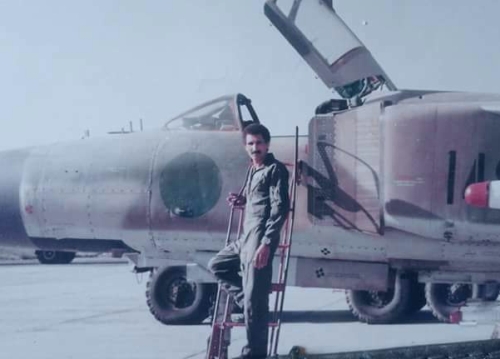|
|
||||||||
 |
||||||||
 |
|
Order of battle of the Libyan Arab Air Defense Force Draft site only! |
|
Libya began building a modern and integrated air defense system in the mid-1970s. They imported large numbered radars, surface-to-air missiles, communication and other related equipment were imported from the Soviet Union. |
|
|
|
All of this was a huge amount of force, but unfortunately, the Libyan Air Defense Force was unable to use that force effectively. Due to serious organizational omissions and deficiencies in the training of troops, the Libyan Air Defense was not effective. There was no effective communication between the units, no camouflage was used and no units moved, etc. |
|
|
|
The largest Air Defense sector, the Tripoli, had four Anti-Aircraft Missile Brigade and three interceptor air squadrons. The 1st and the 11th Anti-Aircraft Missile Brigades defended the capital city from east and west. One Anti-Aircraft Missile Brigade used ASURK-1 automated command and control system, while the rest were not automated. |
|
|
|||||||||||||||
|
|
|
|
||||||||||||||||||||||||||||||||
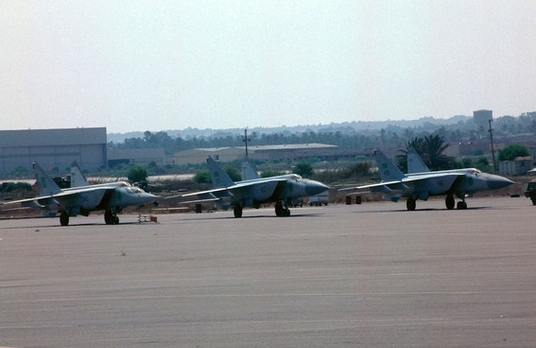 |
|
One MiG-25PU ‘Foxbat-C’ trainer and two MiG-25P ‘Foxbat-A’ interceptor aircraft at Tripoli airport in 1989. This fighter version used the older R-40R/T ‘AA-6 Acrid' missile only. Photo: Barry Iverson collection |
|
|
